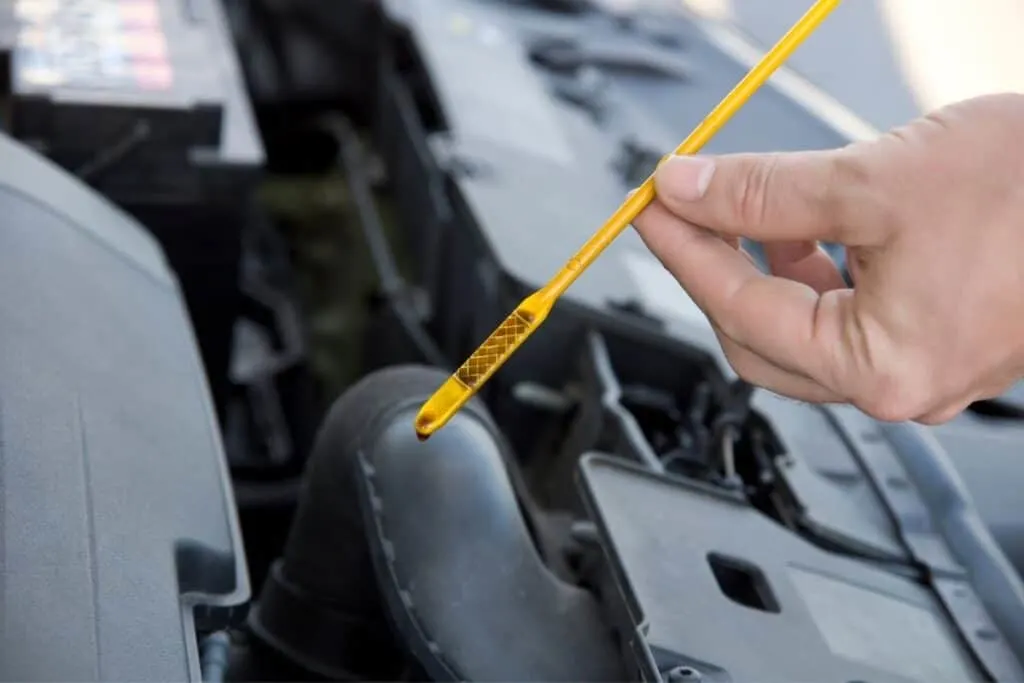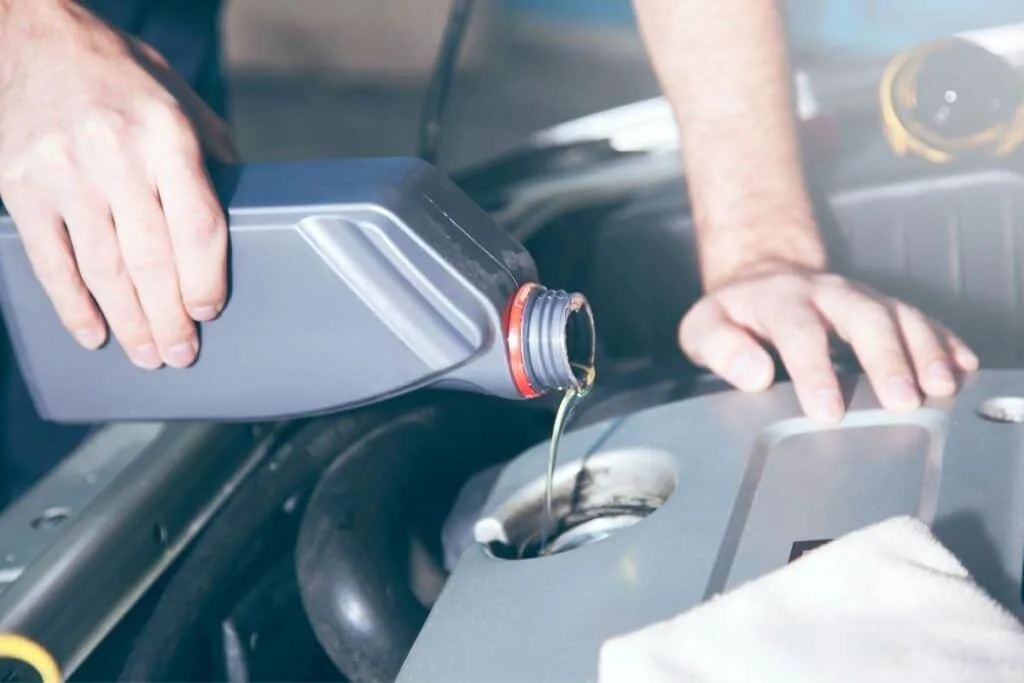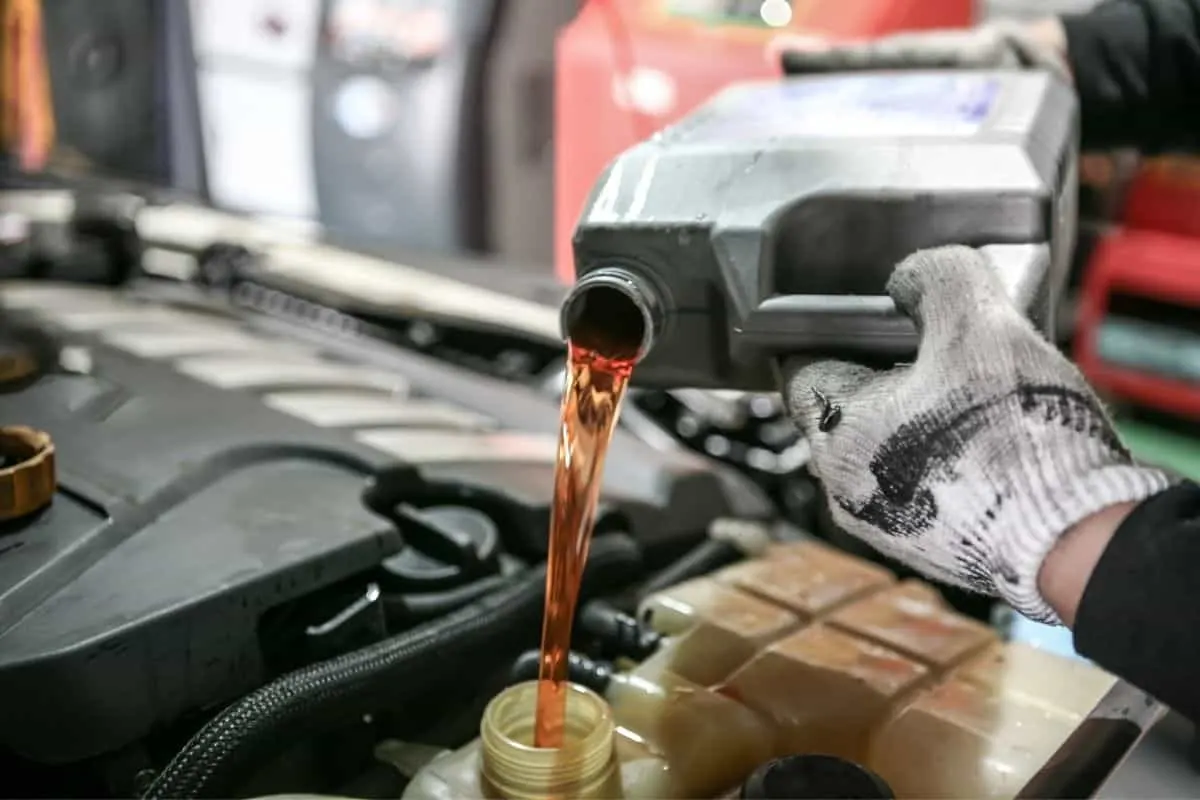Oil changes are an essential maintenance step to keep an engine running smoothly over time. Because underfilling an engine’s oil can result in serious problems, you may find yourself wondering if it’s ok to slightly overfill your engine oil.
Most car engines can safely operate with up to one quart over the recommended level of oil. Overfilling should be avoided when possible because the additional oil will reduce its lubricant properties, causing oil starvation to bearings, clogging the oil filter, releasing metal debris into circulation, resulting in engine failure or severe damage.
Most manufacturers recommend filling the oil to a specific level, so it’s essential to follow these recommendations as closely as possible. Let’s take a look at what can happen when a vehicle’s engine oil is overfilled.
What Can Happen If You Overfill Your Engine Oil Too Much
The presence of too much oil can lead to severe problems in an engine. First, it can put extra strain on the vehicle’s components that result in more gas being burnt.
This means that there is likely to be carbon buildup on pistons, making it harder for them to function correctly. It also can lead to extra strain on the other parts of the vehicle that enable the car to stay in motion.
If there is too much oil in your engine, it can seep into adjacent components that it should not be getting into, such as the power steering pump or transmission.
This can cause severe damage because electrical components that are overly saturated with oil will malfunction and might even stop working for good.
Finally, if the engine oil is too high, it can cause the system to run poorly and not function properly. This means the car will experience poor gas mileage and increased wear on different components of the car’s engine.
Not only will this cut down on your vehicles, but it also increases the likelihood of experiencing a breakdown on the road!

How Much Oil Overfill Is Okay?
If the oil level is a little above the full mark, that shouldn’t cause major problems. When there is a slight unintentional overfill, it often settles after the engine has started and runs for a little while.
The general rule of thumb is that approximately 20% overfill is ok, but it’s still best to fill an engine to the manufacturer’s recommended level. For most vehicle’s this works out to roughly one additional quart.
If it’s overfilled by more than that, or foam shows on the dipstick, the best fix is to have the oil drained and refilled to the proper level.
It’s always tricky figuring out if there is an over-fill or under-fill, especially when there are no obvious leaks. However, each time we check the engine oil, we can be sure if it is full or not and whether the oil level has changed.
Many people don’t realize this, but simply adding a quart of oil to the engine is not the same as an oil change or an oil fill!
According to the owner’s manual, when it’s indicated it’s time for an oil change, it doesn’t mean the oil tank is empty. It means the oil has reached the service limit but still has enough life to keep an engine operating safely.
It all depends on the type of engine. In a car or truck with a dipstick, we should not have to worry so much about accurate measurements to check the oil level. A simple glance at the dipstick can tell us how high or low is the fill.
In a motorcycle, overfills can be dangerous because the oil could boil during prolonged high-speed riding. In this case, it is essential to read the owner’s manual or inquire about the specifications of the engine.

Signs & Symptoms of Engine Oil Overfill
1. Leaking Oil
Leaking fluid can mean several things.
If there is a puddle of oil or black stains around the bottom of the car, it’s time for an oil change.
2. Smoking Exhaust or Engine
White smoke emitted by the exhaust pipe may mean no oil in the engine.
Black smoke or any other color smoke is often an indicator of carbon build-up in the engine.
3. The Smell of Burning Oil
A strong and intense oil-like scent will likely come from the engine.
It smells like a combination between petrol fumes and something roasted or burnt.
4. Poor Performance
If you don’t address the overfill issue, it affects the overall performance of your engine.
Signs of poor performance include:
- Trouble when speeding up
- Stalling or misfires
- Noisy engine
- Frequent overheating
How Long Can You Run a Car with Too Much Oil?
Letting a car with too much oil run for too long will damage the engine and possibly wreck it. This is why we recommend checking your oil level regularly and topping up or changing the engine oil when necessary.
If you accidentally put too much oil into the engine, you should drain out at least half of the excess oil immediately.
If the engine is sludgy and slow after draining the excess oil, have a mechanic flush the engine and engine components. This process will completely remove all residual oil from the engine’s components, allowing it to run efficiently again.
If we let it sit for too long with too much oil, there is no guarantee how long it will last. It may lead to issues sooner, or at a minimum make it more challenging to function efficiently.
However, if there are other problems with different components in the vehicle’s engine, then it might be necessary to remove all the oil so that we can replace it with a proper amount.
Frequently Asked Questions (FAQs)
How Do You Notice If Your Engine Oil Is Too High?
One way to tell if the engine oil is too high is to check the dipstick that measures how much oil is inside the engine. Most modern engines have an indicator that will turn red and show a warning sign when more oil is inside the engine.
That way, you can check if your engine oil is too high before it becomes a bigger problem that will damage different components in the car’s engine.
What Happens If You Have Too Little Oil In Your Car?
If you run out of oil entirely, there’s no way to determine how long the engine will last. So it is best to immediately get the right amount of oil into the engine rather than take any risks.
A small amount of oil can seep in when you’re filling the car’s engine. However, if you have too much oil in the engine, it can cause severe damage and even stop your vehicle from running altogether
As a driver car owner, you must have wondered if your engine is running on the optimum engine oil level. Many engine manufacturers suggest an engine oil capacity guideline on the dipstick, so it would be sensible to assume doing so will enhance the life of your engine.
However, it’s not actually a good thing to completely fill up your engine with oil due to various factors, including risks of overfilling, concerns about poor performances, and adverse effects of cold starts.
